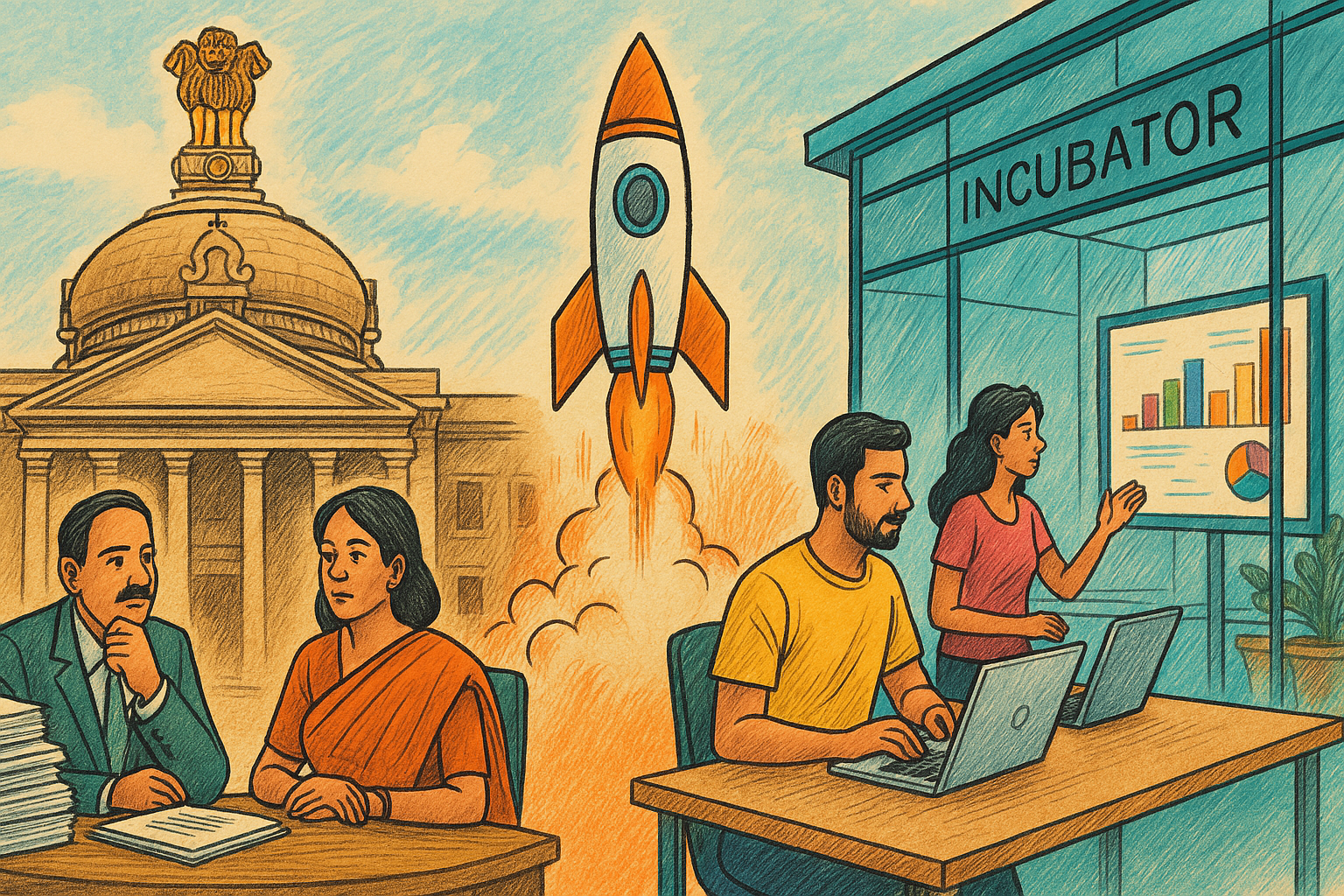On one side of Bengaluru’s bustling tech ecosystem, a startup founder is attending a government-funded accelerator program, gaining free access to a co-working space, grants, and policy incentives. On the other side of the city, another founder sits inside a sleek, privately managed incubator, pitching to a panel of venture capitalists, navigating market readiness drills, and prepping for a global launch.
Both are chasing the same dream—but the support systems nurturing them differ vastly. This contrast brings us to a critical question in India’s evolving innovation economy:
Which incubation model works best—government-backed or privately managed?
India’s Dual Incubation Landscape
India’s startup boom has seen the rise of over 1,000 incubators and accelerators, spread across universities, industrial clusters, and urban innovation hubs. Broadly, they fall into two categories:
- Government-Funded Incubators (e.g., Atal Innovation Mission, DST-supported TBI, MSME incubators)
- Private and Corporate-Backed Incubators (e.g., T-Hub, 91Springboard, Google Launchpad, Cisco LaunchPad)
While both aim to support early-stage innovation, their approach, speed, and impact often vary.
Government Incubators: Inclusive, But Often Bureaucratic
Strengths:
- Accessible to startups from Tier 2/3 cities
- Offer grants, subsidies, and free or low-cost infrastructure
- Strong policy alignment (Startup India, Digital India)
- Encourage socially impactful and deep-tech solutions
Challenges:
- Bureaucratic red tape and delayed decision-making
- Limited mentor pool with industry exposure
- Focused more on infrastructure than strategic scale-up
- Fund disbursal delays and rigid application processes
“Government incubators democratize access but need serious retooling to become globally competitive,” says a startup ecosystem analyst.
Private Incubators: Agile, Market-Driven, and Investment-Focused
Strengths:
- Run by experienced entrepreneurs, VCs, or corporates
- Fast-paced decision-making and dynamic programming
- Greater exposure to industry networks and global markets
- Often linked with investment arms or accelerator cohorts
Challenges:
- High entry barriers—selective admission
- Often metro-centric and less accessible for underserved demographics
- Revenue models may lead to prioritizing profitability over inclusivity
- Shorter incubation cycles that may not suit deep-tech or social ventures
“A private incubator forced us to become investor-ready in 3 months. It was intense—but game-changing,” says a fintech founder in Mumbai.
Where the Models Overlap—and Should Collaborate
Some of India’s most successful incubation case studies come from hybrid models where government infrastructure is complemented by private mentorship and funding.
For example:
- Government-backed incubators inviting corporate mentors and angel networks
- Private incubators leveraging government schemes for funding their cohorts
- University incubators creating PPP models with corporates for sector-specific labs (e.g., agritech, cleantech, AI)
This public-private convergence is emerging as a promising third path—blending inclusivity with scalability.
Which Model Is Better for India’s Startup Future?
There’s no one-size-fits-all answer. The right model depends on:
- Startup stage (idea validation vs. scaling)
- Geography (urban vs. rural reach)
- Sector (deep tech vs. quick-market MVPs)
- Founder profile (first-generation vs. serial entrepreneurs)
For early-stage, first-time founders in small towns, government models provide access and affordability. For high-growth, investment-ready ventures, private models offer speed and scalability.
The Way Forward: Policy + Performance
To strengthen the overall incubation fabric in India:
- Government incubators need operational autonomy and startup-savvy leadership
- Private incubators should embrace inclusion and long-term mentorship
- Both should build structured outcome-tracking systems
- Cross-pollination of talent, funding, and infrastructure must be encouraged
Conclusion: Not Either-Or, But Both-Together
India’s economic growth and innovation future doesn’t rest solely on one model. Instead, it lies in creating a symphony between government inclusion and private intensity.
Because the real question is not which model is better—but how can we make both work better, together?



